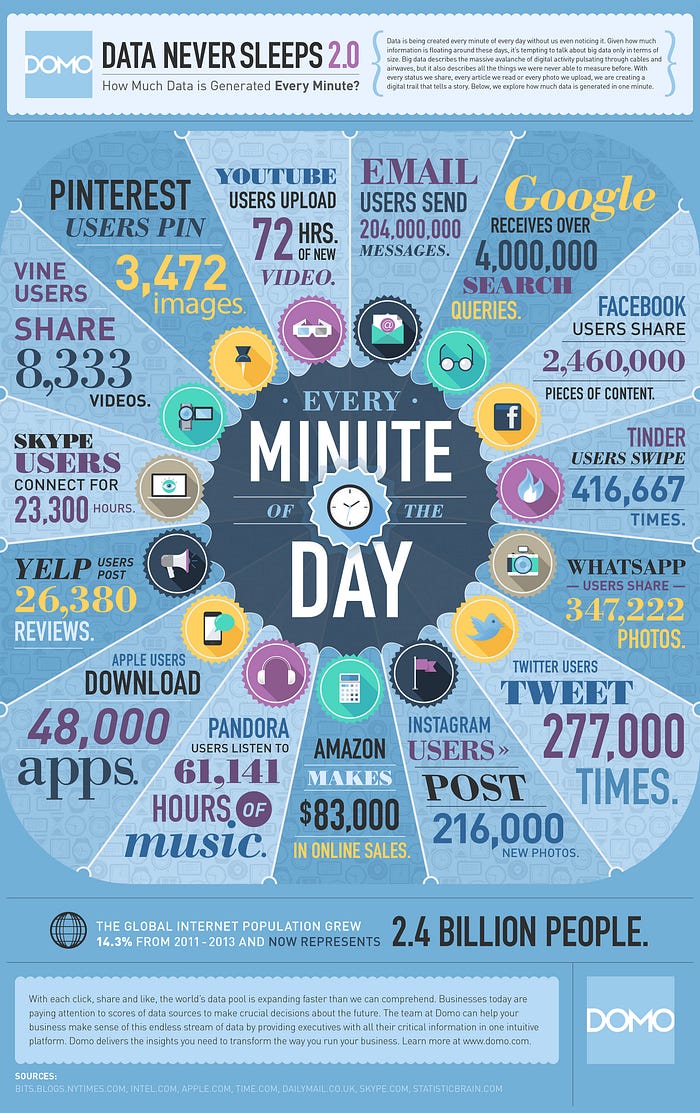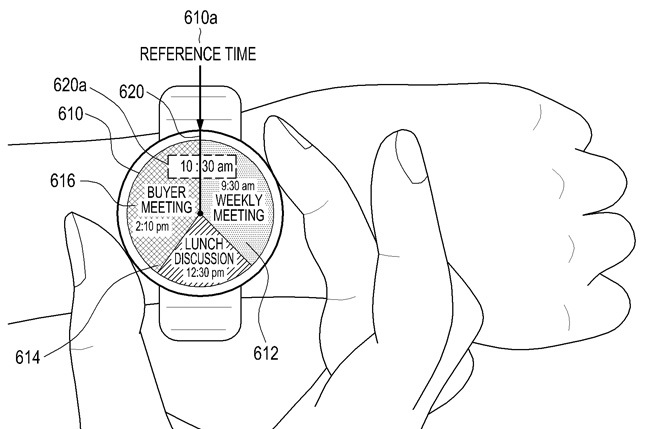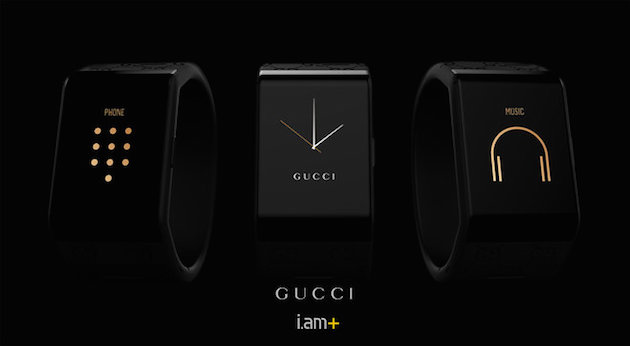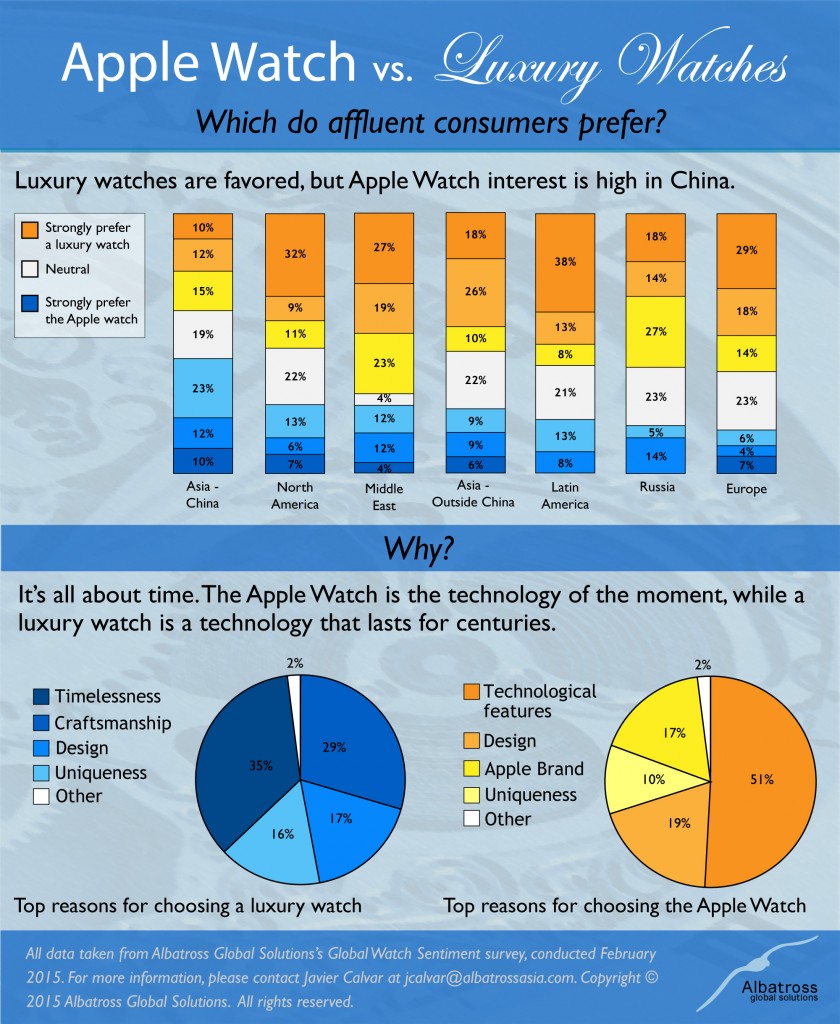Sections
Pick of the Week – Context and Magic
According to leading VC Christian Hernandez, we are already living in the Age of Mobile. What’s coming next is the Age of Context in which ever more powerful mobile devices offer dramatically richer and more personalised contextual information when and where we need it. It’s a trend being accelerated by a number of complementary developments:
- Expanding mobile device processing capability
- Collapsing cost of data storage
- Exponential increases in the quantity of user generated data
- Progress in Machine Learning and Artificial Intelligence
- Deep linking programming interfaces for sharing context across apps and services
“In the Age of Context personal data is integrated with publicly available data and app-level data to intelligently drive me towards an action. It is an age in which we, and the devices and sensors around us, generate massive reams of data and in which self-teaching algorithms drill into that data to derive insight and recommend or auto-generate an action. It is an era in which our biological computational capacity and actions, are enhanced (and improved) by digital services.”
For Hernandez and many others, it’s not a question of if but when it will happen:
“The trends above are all happening around us, the standards and algorithms are all being built by brilliant minds across the world, the interface layers and devices are already with us. The Age of Context is being created at an accelerating pace.”
This infographic highlighted in the article provides a glimpse at the data firehose powering the transformation:

A complementary post published this week from the perspective of the MWC 4YFN (Four Years from Now) event emphasises how significantly these trends will impact on business in the coming years:
“In 4YFN, the future was something coming in waves: tangible and unrelenting, but not something one could hold in the palm of one’s hand.”
Many big companies will fail to understand or adapt to the profundity of change heading their way, a message echoed in a recent book on Exponential Organisations:
“Boards of directors, project management teams and decision committees will be too slow and too conservative, and “this is the way we’ve always done it” is a death knell for innovation and attracting innovators. “
The 4YFN post also notes the importance of “self-configuration” in creating invisible “magical experiences” and makes a point about the need for non-deterministic approaches based on, for instance, stochastic MDP based models being at the core of creating a semblance of “magic” for users:
“Operating in the real world is unpredictable: hence choosing which conditions to monitor, and creating the decision framework for automatic (ie non-human) triggers, are necessarily more probabilistic rather than deterministic.“
There remain plenty of more skeptical voices, however, surveying the history of smart tech failure and pointing out that we still a long way to go to imbue everyday tech with magic in all contexts.
Devices and Manufacturers
- This meticulous post from a manufacturing industry specialist provides tremendous insight into how Apple will manufacture gold, stainless steel and aluminium casings for corresponding Apple Watch variants. It’s well worth reading for a glimpse into world class product execution:
“I see these videos and I see a process that could only have been created by a team looking to execute on a level far beyond what was necessary or what will be noticed. This isn’t a supply chain, it is a ritual Apple is performing to bring themselves up to the standards necessary to compete against companies with centuries of experience.”
- In case their products weren’t already persuasive enough, Apple have introduced a further inducement to switch – they’re extending their trade in policy to non iPhones. It remains to be seen how practical this is given that typical Apple products cost a lot more than many Android or Windows Phone devices.
- Alcatel have bold ambitions in 2015 for their One Touch Android smartphone range:
Alcatel Onetouch to spend $100m marketing Idol 3 according to @MobileNewsMag. Targeting sales of 10m units. pic.twitter.com/hDs3C1cNXS
— Ben Wood (@benwood) March 18, 2015
- So does Colin Batt, CEO of Bullitt, the UK company behind the popular ruggedized CAT phone:
Bullitt Group CEO (maker of CAT Phone) signals £200m 2015 rev target & headcount growth according to @MobileNewsMag pic.twitter.com/oAYfrwjSts
— Ben Wood (@benwood) March 18, 2015
- Bullitt also helped Kodak build their first smartphone providing “yet another sign that the smartphones have become about as good as they need to be” according to Quartz. The phone is nothing special but arguably it doesn’t have to in order to succeed:
“At a time when devices from the major smartphone brands have become virtually indistinguishable, and consumers have, to some degree, stopped caring about upgrading to the latest, fastest, sleekest, thinnest device, differentiation in smartphones is increasingly coming from the custom software that smartphone makers like Xiaomi or One Plus are putting into the things, and from the “experiences” they are selling.”

- Kodak’s smartphone is apparently “like something you would expect to find advertised in The Oldie.” However, Doro, who explicitly build phones aimed at the elderly are struggling to compete against entry-level Android propositions:
Doro smartphone for seniors UK sales only 20k units in 2014. Tough sell versus iPhone which many over 60s now use. pic.twitter.com/bl5JXSeCG5
— Ben Wood (@benwood) March 18, 2015
- The Japanese are still in love with their feature phones or gara-kei, a compound term built from “Galapagos” and keitai (phone). 2015 versions can offer quad core processors and LTE:

- WSG on how Leica survived the digital onslaught essentially by retaining a focus on retro cameras with precision optics albeit digital interior.

Google and Android
- Benedict Evans outlines the formidible complexity of the Android landscape by analysing both the different flavours of “open” and “closed” Android available to OEMs and the different types of global Android consumers:
“the underlying point about both lists is that tech and mobile have grown far past the point that there is really a single market for anything. When you connect everybody you get, well, everybody, and they’re not all like you.”
- With AOSP code for Android 5.1 now available for inspection, it is becoming clear that the 14k bolus of commits it comprises are many fixes and improvements. Engadget seem to be suggesting that among all the changes is additional VPN functionality to support Google’s MVNO ambitions.
- The consternation many OEMs feel around the extent of change in 5.1 is a good starting point from which to take stock of the Android update conundrum. Many customers want the latest version of the OS on their phone but the costs involved in integration and testing are huge and OEMs typically have little visibility of what is heading their way to support planning. Clearly Lollipop has struggled to make headway barely registering on the scale with an anaemic 3.3% of Android market share fully six months after launch:
Apps and Services
- MondayNote’s Frédéric Filloux published a thoughtful take on the perennial Native vs. Web debate suggesting that the nature of consumption of certain types of content, particularly news, is actually best suited to delivery via Web.

- Meerkat is an app that lets you send video via Twitter. It has gone viral and rumours are swirling that Twitter is trying to shut it down. It is nevertheless a great example of the vibrancy and sheer unpredictability of the evolving OTT Messaging scene.

- Another star of the OTT Messaging firmament is Slack. Further evidence of its ascent to mainstream came this week in the form of an NYT profile piece:
“After only a year in operation, Slack now serves about half a million workers every day as a partial replacement for email, instant messaging and face-to-face meetings. Its base of users is doubling every three months, according to Stewart Butterfield, Slack’s co-founder and chief executive. Mr. Butterfield predicts that by the end of the year, two million to three million workers around the world will be using Slack.”
- NYT also did a write up of TED in a post entitle The Church of TED. It highlighted the curious similarity between the most popular speakers and methods adopted by Christian evangelicals.
- Github has won out over other version control systems not because it is technically better but because it is uniquely designed to serve the needs of those who want to fork a codebase and then offer it up to others for review and integration back into mainline. Or as the author of the post puts it somewhat more idiosyncratically:
“GitHub won because it made the solitary task of coding extremely social. GitHub won because it enabled anti-social Asperger coders to express themselves through their code.”
Asia
- Forking may be considered a good thing by many developers but as this Tech In Asia piece outlines there are downsides. Baidu encountered enough of them to apparently give up on ambitious plans for their own Android fork. A convenient excuse to wheel the Forking hell trope.
- Nearly 70% of smartphones being sold in China are replacements for existing models as opposed to genuinely new purchases:

- Pollution in China is a huge problem. A video recently posted to YouTube outlines the shocking reality:
Cloud Computing, APIs and Microservices
- AWS and Azure dominate the Cloud Computing IaaS landscape:

- IaaS vendors have arguably the most important kingmakers of cloud – they control the platform and infrastructure that everything else in the cloud (eg. PaaS and SaaS propositions) is built upon. This LinkedIn post outlines a great non-technical explanation from the perspective of the different types of pizza as a service:

- Microservices are now officially a thing. O’Reilly have a book covering their construction. The cover picture seems very apt:

- Fintech and APIs easter egg spotted in this week’s UK Budget:
Hidden in @hmtreasury #Budget2015 is this great news on APIs, following the work my colleague @andyreiss has done. pic.twitter.com/aiMPawXQS9
— Alexander Baker (@EconAJB) March 18, 2015
Big Data
- Visualisation of a day in the life of the London Underground shows peak volume of travellers around 8.40am and 6.10pm
Free Software Foundation
- It’s 30 years since Richard Stallman (“rms”) published his famous GNU Manifesto in Dr Dobbs’ Journal. His action gave rise to the GPL and free software movement and directly inspired the development of Linux. 30 years on, rms’s influence with developers remains undiminished as the world he foresaw a generation ago has largely come to pass:
“Stallman was one of the first to grasp that, if commercial entities were going to own the methods and technologies that controlled computers, then computer users would inevitably become beholden to those entities. This has come to pass, and in spades. Most computer users have become dependent on proprietary code provided by companies like Apple, Facebook, and Google, the use of which comes with conditions we may not condone or even know about, and can’t control; we have forfeited the freedom to adapt such code according to our needs, preferences, and personal ethics. “With software,” Stallman still frequently observes, “either the users control the program, or the program controls the users.”

- Stallman himself marked the occasion with a characteristically robust polemic on why we need a free hardware equivalent to complement the free software movement he started.
Smart Retail
- SmartFocus have announced a “virtual beacon” alternative to traditional Bluetooth beacons which is built around “an AC-powered, multi-frequency beacon“. Only one of these is required per store which should in theory dramatically reduce the current complexity of beacon installs for large retailers:
“Together with the magnetometer in the phone, which acts as a compass, the SmartFocus system can triangulate the customer’s position using the radio frequencies and Wi-Fi.”
![]()
Smart Watches and Wearables
- Google’s response to Apple Watch came with a conjuring trick of an announcement at Baselworld this week of a three-way tie up with Tag Heuer and Intel to develop a range of luxury Android Wear watches. There’s little substance to go on yet but it’s clearly a big strategic deal for Google who sent David Singleton (right below), Director of Engineering for Android Wear, to Switzerland to cut a cheese along with Jean-Claude Biver, head of LVMH’s watch division:
“None of the three partners would offer many specifics, except to say they’re particularly interested in the intersection of the small details that make mechanical watches so beautiful, and the new technology that comes from Android Wear and smartwatches in general. But this, they seem to think, is the start of something big.”

- Which Apple Watch is right for you? With 38 launch variants now seemingly confirmed it’s a pertinent question for early adopters. The Gold Edition of course is the one much of the analysis is focussed on but the vast majority will not be looking to extend their Apple love that far. Expect most to purchase a few entry level products at least in the West.

- This study on Apple Watch prospects vs luxury watches concludes that interest is particularly high in China where the Gold Edition should do disproportionately better than in the West but looking at the data, v1.0 will need to offer a compelling technical proposition to really take off:
- Samsung aren’t likely to make much of a dent on this landscaped by responding with a smart watch powered by an octocore processor. And yet according to The Register that is precisely what they will be doing:

- Will.i.am probably won’t worry any of the competition with his luxury smartband proposition being developed in conjunction with Gucci. Details are scarce but it seems likely the device will build upon the critically panned Puls smartwatch. Will.i.am remains eminently quotable:
“I coined the term ‘fashionology,’ a merging of the worlds of fashion and technology, and that is exactly what this collaboration with Gucci represents,’

- Neptune’s interesting inverted take on current assumptions around the smartphone-wearable link was very recently covered in this blog. They’ve now launched an Indiegogo crowd-funded campaign for a whole constellation of connected products including a dumb screen and keyboard as well as a USB TV dongle all centred around their smart wearable Hub. With the tagline “one hub, many displays” Neptune seem to be taking the whole notion of ‘dumb glass’ to its logical conclusion. A lot will depend on a seamless experience across all touchpoints:
- Dave Coplin, Microsoft’s Chief Envisioning Officer states the rather obvious in a corporate blog post, namely that in order to be successful, wearables need to be “useful, usable and desirable”. He goes on to extol the virtues of Microsoft Band naturally.
Space
- A spacesuit is a different kind of wearable from that normally covered in this blog but packed with technology nonetheless. With growing interest in commercial space travel, there is clearly a need to develop something appropriate for ordinary astronauts. Quartz profile a small Brooklyn based outfit called Final Frontier Design working on a one-size fits all pressurized space suit for those would-be spacemen and women looking for some style to go with their substance.

- Japanese researchers have moved a step closer to the ultimate solar power solution namely beaming it from a grid in space back to earth:
“The team .. reportedly beamed 1.8 kilowatts, enough juice to power an electric tea kettle, more than 50 meters to a small receiver without any wires. Up next: scaling the technology for use in tomorrow’s orbital solar farms.”

Software Development Insight from Quora
- This Quora post from a correspondent that worked at both companies provides a really interesting glimpse into Apple vs Google engineering culture and the indirect influence that open source brings to bear at the latter:
“Google .. has consistently great code quality across all projects. From style to documentation. I think this is driven by having so many open source projects (Apple has many too! But far fewer than Google.)”
- Another Quora post suggests that Google doesn’t practice “Agile” (with a capital A) and seeks to ensure instead that developers are shielded from pointless meetings and left to focus on development only:
“There are a lot of things wrong with Google, but the “Agile” nonsense hadn’t infected the place when I was there, and probably won’t, and there’s a deliberate effort to keep useless meetings from proliferating, so I’d say that it’s quite possible to get a solid 6 to 8 hours in.”
- Feross Aboukhadijeh is famous for building YouTube Instant “in 3 hours” as an intern at YouTube. He acquired his expertise over years of working on many different web sites in his spare time. His Quora response to a question asking how he learnt to program goes into a lot more detail and is an object lesson in the value of curiosity:
“I learned how to program by working on lots of different website projects starting from a pretty young age. … What I hope the reader takes away from this full re-telling is the importance of doing lots of side projects if you want to learn to program well.”
Society
- Data on price changes in consumer products reveals why healthcare should be a primary focus for innovation in the coming decade:
https://twitter.com/pmarca/status/578413392907505665
- Joy of Tech take on nomophobia:

Work and Leadership
- This firstround.com post on impactful engineering leadership profiles Jessica McKellar, a Director of the Python Software Foundation who gave a keynote at PyCon 2014. She is also an Engineering Manager at Dropbox through their acquisition of Zulip, an enterprise chat startup where she was VP Engineering. She makes some great points on the importance of tools, process, autonomy and quality. Above all the need to respect and cultivate engineering talent through a continuous focus on shaping work trajectory to meet individual needs because:
Your Team’s Capacity = Your Executional Ability
“When you’re a technical manager, your job is mostly about humans,” McKellar says. “There are two things you should always be thinking about: People’s day-to-day and their year-to-year.” You should imagine every individual is traveling on both of these tracks at the same time. And as a leader, you can shape their experience on both to help them find a trajectory that meets their goals and your needs. … To develop a long-term relationship with an engineer, you have to learn enough about them to provide a framework to think through their career growth together,” she says. “You want them to articulate 1) the skills they want to improve, 2) the technical and non-technical experiences they want to have, and 3) how they want to increase the scope of their impact at the company.
- Late night emails don’t work according to this HBR piece and ultimately have a negative effect on team productivity:
“Being connected in off-hours during busy times is the sign of a high-performer. Never disconnecting is a sign of a workaholic. And there is a difference.”
- Rather than firing off frantic midnight emails, it is more important to cultivate the discipline of psychological distance and put routine work ‘crises’ in wider perspective. This might help improve decision-making in the face of change which is often overlooked in those overly focussed on executing against a given strategy. There is a close connection between execution and strategy and for LinkedIn CEO, Reid Hoffman, the two keys are speed and simplicity in all decision-making. It’s an approach designed to avoid an all too familiar big company organisational antipattern, analysis paralysis:
“When faced with a set of options, Reid frequently will make a provisional decision instinctually based on the current information. Then he will note what additional information he would need to disprove his provisional decision and go get that. What many do instead — at their own peril — is encounter a situation in which they have limited information, punt on the decision until they gather more information, and endure an information-gathering process that takes longer than expected. Meanwhile, the world changes.”
- HBR also outlined what executives value the most in their CEOs – humility, visibility and persuasiveness.

